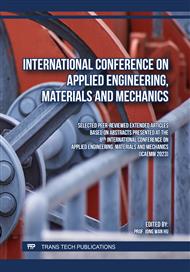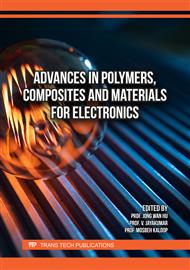p.83
p.91
p.101
p.109
p.121
p.131
p.139
p.147
p.159
Low-Temperature Atmospheric Pressure Plasma Jets and their Applications in the Surface Activation of some Polymeric Substrates for Advanced Electronic Packaging
Abstract:
The present study applied low-temperature atmospheric plasma (LTAPP) jets to modify polymer substrates used in chip packaging. These substrates include bismaleimide triazine (BT), polyimide (PI) and PTFE materials. All these materials play important roles in modern semiconductor packaging. During the study, focuses were aimed the effects of reactive species (mainly OH and atomic oxygen) generated by atmospheric plasma jets on surface energy, water contact angle (WCA) and surface composition of these three substrates. In order to better understand and apply LTAPP jets, another focus will be on the understanding of the relationship among (1) the generation and distribution of various reactive species, (2) parameters for generating LTAPP jet, and (3) plasma characteristics. The plasma activation mechanism of these substrates was also discussed. In addition to plasma generation using AC high-voltage supplies, plasma characterization using optical emission spectroscopy (i.e., analysis of electron density, electron temperature, plasma temperature, and reactive species), XPS and water WCA analysis were used to understand surface activation mechanisms. In sum, Ar and Ar-O2 plasma jets can be used to modify the surfaces of these three substrates, although the latter relies on the generation of O radicals, while the former relies on OH radicals more. According to the results obtained by XPS analysis, the formation of C-O and C=O bond after plasma treatment is the main reason for surface activation in this study.
Info:
Periodical:
Pages:
121-129
Citation:
Online since:
February 2024
Authors:
Price:
Сopyright:
© 2024 Trans Tech Publications Ltd. All Rights Reserved
Share:
Citation:



